The Top 9 Exercises to Avoid Cycling Injuries
Welcome to our blog, fellow cycling enthusiasts! As an athlete who loves the open road and the invigorating feeling of cruising on two wheels, you’re well aware that cycling can sometimes come with its physical challenges. According to data, nearly 1,000 cyclists unfortunately succumb to fatal accidents, and over 130,000 encounter injuries on U.S roads annually.
But here’s the good news. By incorporating some specific strength exercises into your routine, you can drastically reduce the risk of such injuries, ensuring a more robust and consistent training journey.
Whether you’re a seasoned rider looking to sidestep recurring injuries or a newbie eager to start right and stay safe, we’ve got you covered. In this blog, we’re diving into the top 9 exercises that can help you keep cycling injuries at bay. Let’s turn those wheels towards a healthier and safer cycling experience! Stay tuned, pedal on, and let’s empower your cycling journey together.
What are the most common cycling injuries?
Cyclists can experience a spectrum of injuries, from neck pain, lower back strain, and knee injuries, to wrist discomfort and hip pain. A proactive approach to tackling these typical complaints is to refine your cycling form, adjust your equipment, and focus on strength-building exercises. This combination not only maintains your biking performance but can also reduce your chances of injuries.
Neck Pain

Neck pain during cycling often arises from positioning your neck too severely. It’s advisable to reevaluate your form. On a road bike, pull your stomach towards your lower back to stretch your torso. Maintain your chest slightly elevated, and keep your chin tucked. If you’re considering a new bike or helmet, it’s worth investing in well-fitted ones. Expert help from local bike shops for adjusting seat height, handlebar height, and pedal alignment can ensure a comfortable riding experience, ultimately minimizing the risk of neck pain.
Lower Back Pain

Cycling sometimes results in lower back pain, largely due to the forward-leaning posture. This position could potentially harm, particularly if you already struggle with poor posture. To combat lower back pain during cycling, check that your saddle is at the appropriate height and your handlebars aren’t too distant. Regularly varying your hand positions on the handlebars can also offer your back a respite.
Knee Pain

Knee pain is a prevalent issue among cyclists, particularly around the kneecap, usually due to overuse. To protect your knees during biking, avoid pedaling with your toes down. Instead, lower your heel and ensure your knee aligns with your foot during the pedaling cycle. This modification can alleviate the strain on your knees. Plus, a professional assessment of your saddle level can be beneficial, adjusting it to the right height.
Wrist Pain

Wrist pain can indicate ulnar neuropathy or “handlebar palsy,” caused by persistent compression of the ulnar nerve. Often, this is associated with long rides, maintaining the same hand position. Medical advice is imperative for these symptoms, which can be tenacious. A slight adjustment in your saddle’s angle or handlebar height might just be the solution for your discomfort.
Hip Pain

Overtraining can cause hip pain, typically resulting from prolonged seating periods that may hamper blood flow. Proper adjustments to your riding posture and bike fittings, including the saddle and handlebar positions, can mitigate hip pain effectively. Straight, properly tilted, and adequately high saddles can aid in eliminating hip discomfort.
How to Utilize Strength Training to Prevent Cycling Injuries?
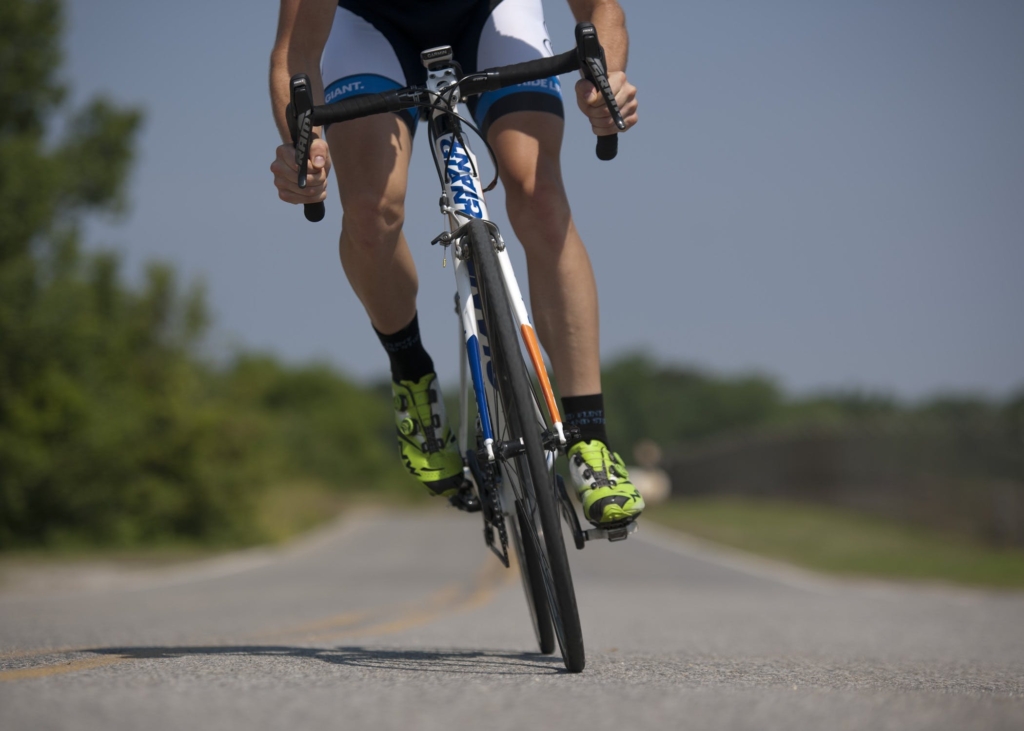
The benefits of strength training in injury prevention are two-fold: they enhance the strength of your muscles, tendons, ligaments, and bones, and they counteract bodily imbalances. Inclusion of targeted exercises in your routine can enhance your resilience, enabling you to stay consistent with your cycling endeavors.
What are the best exercises to help prevent cycling injuries?
Incorporating strength training exercises into your weekly routine can do wonders in injury prevention. The best part? They require no gym access!
1. Bird Dog

Start on all fours, back flat, arms under shoulders, legs under hips. Extend right arm and left leg straight, parallel with the floor. Engage your core. Return to the starting position and alternate sides. Repeat 10 times each.
2. Bulgarian Split Squats
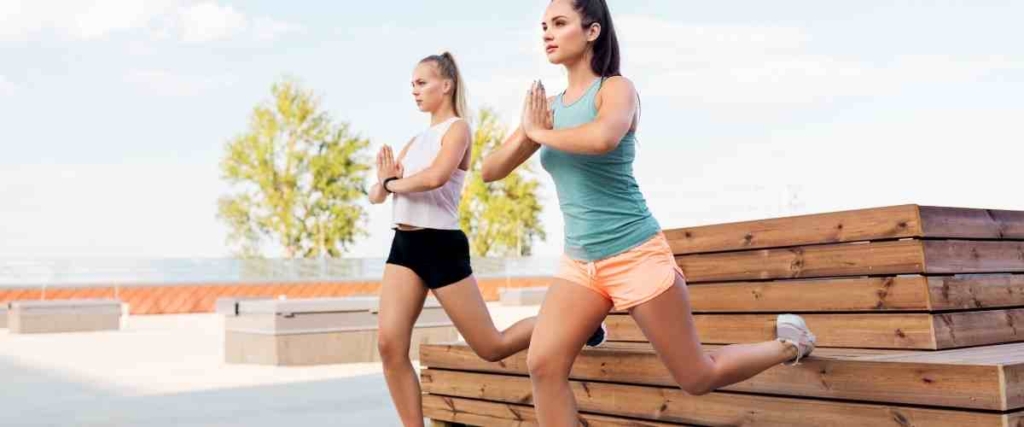
Place one foot on a knee-height bench. Dip into a 90-degree forward lunge, aligning knee with foot. Ensure your knee doesn’t overstep your toes. Keep upright with square hips. Push up through your heel and straighten your front knee. Do 10 to 12 reps, then switch legs.
3. Glute Bridges
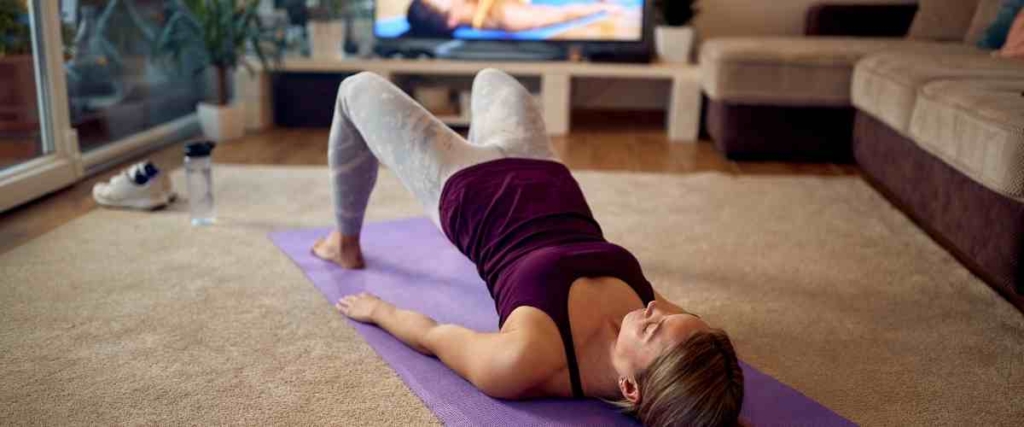
Lie flat on your back, knees bent, feet on the ground. Flex glutes to lift your back until only shoulder blades and feet rest on the floor. Hold for 5 seconds, then relax. Repeat 10 times.
4. Forward Lunges

Stand upright. Step forward with your right leg, keeping your left leg straight. Bend your front knee until you feel a stretch in your left hip. Make sure your knee doesn’t protrude over your toes. Return to the start, switch legs, and repeat. Do 10 to 12 reps on each side.
5. Plank

Lie on your belly. Lift your body, balancing on toes and forearms. Keep your back flat, eyes down. Hold for 20 seconds, then relax.
6. Single-leg RDL

Stand facing forward. Lift one leg and lean forward, extending the other leg behind with a flat back. Return to start and repeat. For more challenge, hold weights.
7. Russian Twists

Sit with bent knees. Lean back at 45 degrees, back straight. Hold hands in front, tighten your core, and lift legs off the ground. Rotate arms to right side, touch the floor near your waist, then switch sides. One rep includes both sides. Do 12 reps.
8. Deadbug
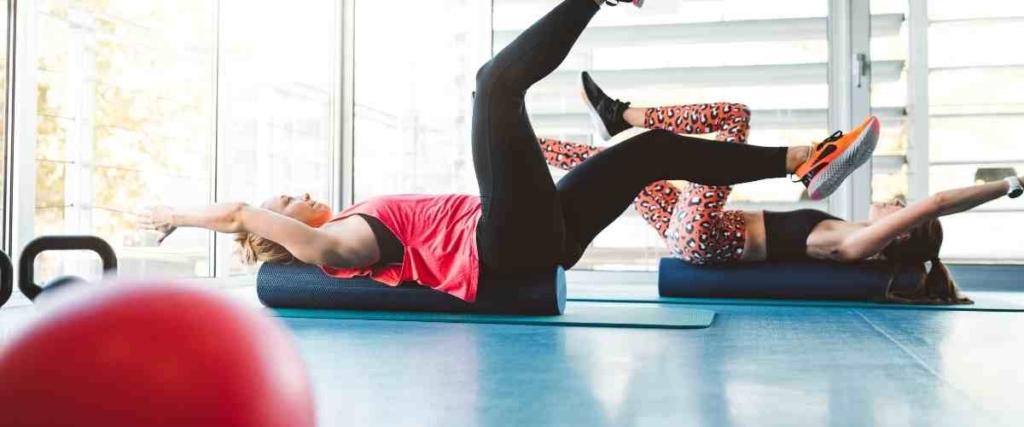
Lie on your back with arms and legs straight up, knees bent at 90 degrees. Lower your right arm behind your head while straightening and lowering your left leg. Hover above the floor, then return to start. Switch sides for two reps. Do 10 reps each side.
9. Bodyweight Squats

Stand with feet shoulder-width apart. Pretend to sit back into an imaginary chair. Keep your head forward and chest up. Ensure knees align with toes, drive weight into heels. Stand back up. Do 10 to 12 reps.
These exercises target diverse muscle groups, promoting overall strength, and balance in your body, paving the way for safer cycling.
Guidelines for Strength Training
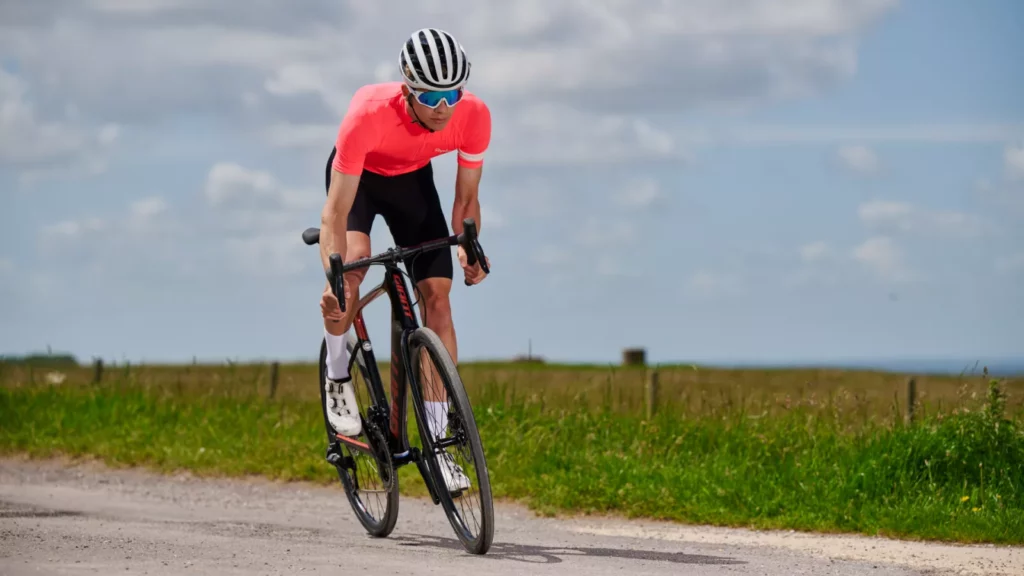
While these strength exercises are designed to prevent cycling injuries, it is crucial to perform them with safety in mind. Start slow, use proper form, warm up adequately, and remember, resting is as essential as exercising. The journey towards stronger, injury-free cycling is a gradual process, not a race. Patience and perseverance are key, as in cycling itself. So, gear up, adjust your saddle, and embrace the power of strength training for a smoother ride!
